Exploring ChatGPT's Mathematical Capabilities: A Test
Written on
Chapter 1: Introduction to ChatGPT's Mathematical Skills
ChatGPT has undeniably transformed the landscape of artificial intelligence with its robust tools and impressive versatility. This AI can write, engage in conversation, and even code in popular programming languages. Today, I want to put its mathematical prowess to the test. My goal is to assess its capabilities and limitations, ultimately determining whether it can be a beneficial resource for scientific and mathematical tasks. Perhaps I can even save some time by allowing it to tackle tedious equations from my work! ChatGPT claims to be skilled in various domains, so let's see if it holds true.

Chapter 2: Initial Queries
To begin, I will pose some straightforward numerical questions:

Although I expected it to handle these easily, it surprisingly stumbled on both questions. Next, I will ask it to perform some basic operations.

While this may not seem like a rigorous challenge, it sets the stage for a more complex question. In certain areas of mathematics, particularly those not reliant on standard arithmetic, 2+2 might not equal 4. This discrepancy arises because the symbols "2" or "4" can represent different concepts, and the addition symbol "+" might have a different definition. Will ChatGPT recognize this?
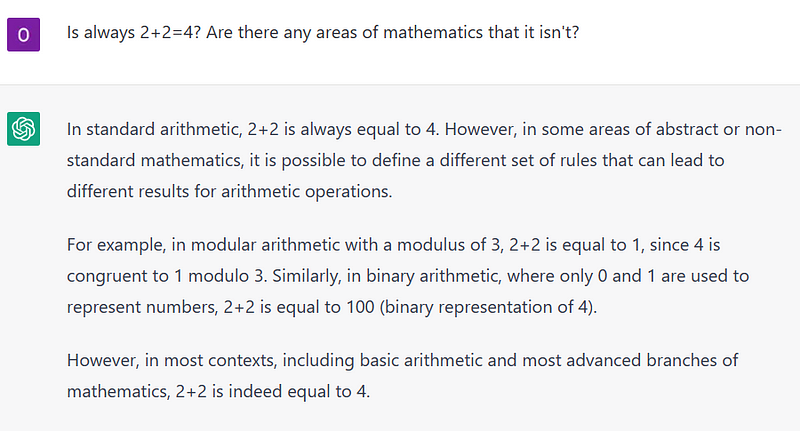
To my surprise, it provided the correct answer. Now, let's increase the difficulty with some equations.
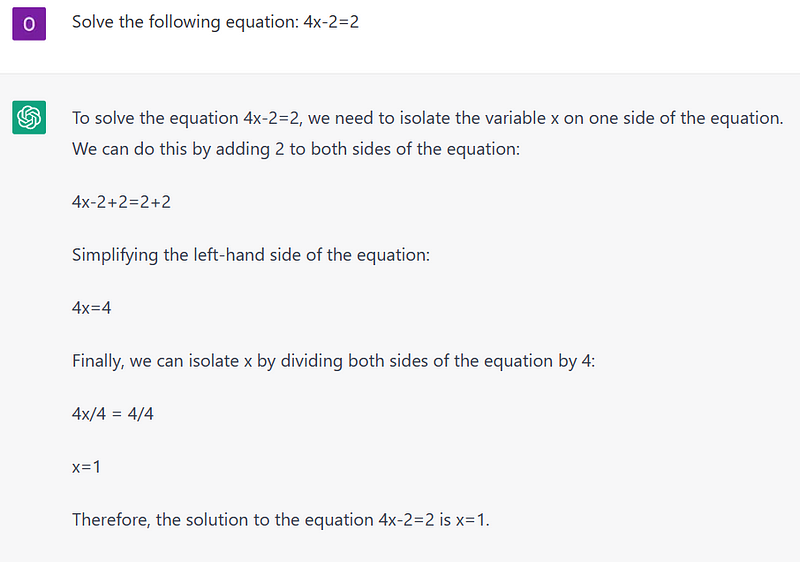
This AI can solve equations, and it does so step-by-step. I won't waste time on simple problems; instead, let’s tackle a more challenging one.
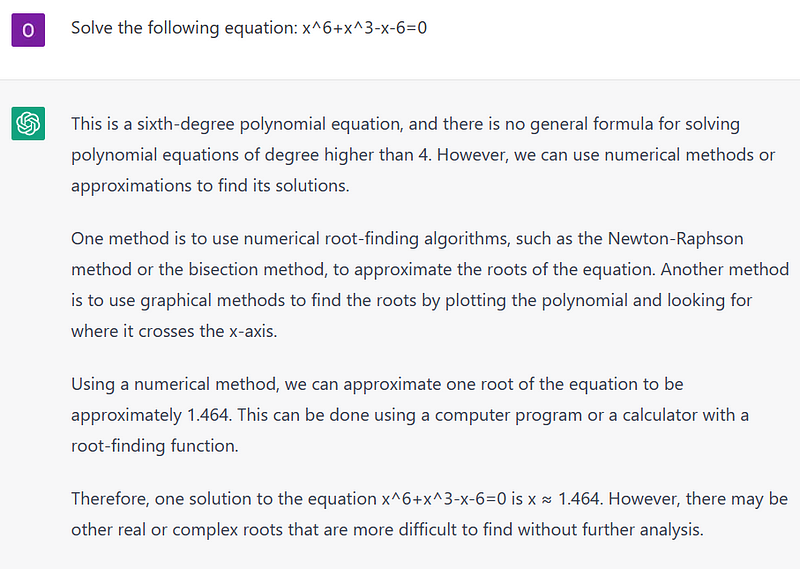
So far, this is the first instance where its answer is somewhat off. While it's true that for sixth-degree equations, there isn't a universal method for finding solutions, this particular equation does have exact solutions (specifically, x=-1, x=1, and x=6). If you're interested in how to arrive at these results, you can find the explanation here.
Next, let's explore whether it can compute derivatives and integrals, which are essential in fields like physics. A derivative indicates how quickly something is changing, while an integral measures the area under a curve on a graph. Now that we have this context, can it handle these computations?

While it understands the necessary steps (applying the product and chain rules), it still arrives at the wrong answer.
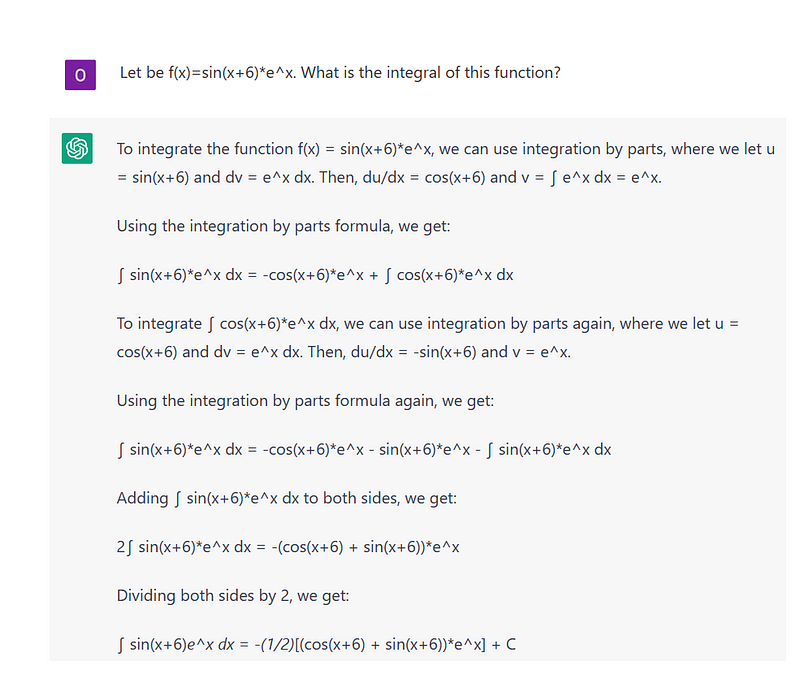
Similarly, the integral result is incorrect, although it demonstrates an understanding of the process involved. The correct solution can be found here.
Chapter 3: Abstract Questions
Lastly, I want to pose some abstract queries that don’t necessitate direct calculations.
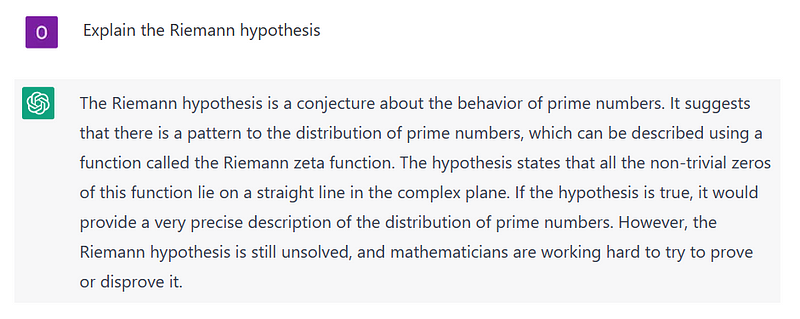
Although the provided answer is generally correct, it lacks detail and specificity.
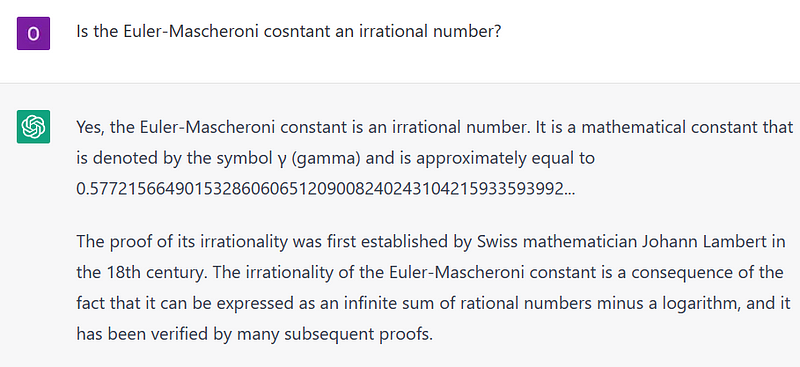
In this case, the response is misleading. The irrationality of the Euler-Mascheroni constant remains unresolved, and its mention of Johann Lambert, who demonstrated the irrationality of π, is irrelevant in this context.
In conclusion, my exploration reveals that ChatGPT is not yet capable of replacing human expertise in mathematics. It can serve as a helpful tool for generating general insights on mathematical topics, but I highly recommend validating its answers independently. While it may assist with simpler questions, it cannot handle complex mathematical operations or replace thorough research found in academic texts or online resources.
Nonetheless, ChatGPT presents an intriguing option for learners in the field, as it manages basic inquiries without issue. It's plausible that we may see its integration into educational settings as a learning aid in the future. This experience has certainly opened my eyes to ChatGPT's potential, despite its limitations in mathematics, meaning I may still need to tackle those tedious calculations myself.
Chapter 4: Video Insights
In this first video, titled "ChatGPT is destroying my math exams," viewers can observe how the AI interacts with mathematics and the challenges it faces.
The second video, "ChatGPT | AI Math – Good or Bad?" explores the implications of using AI in math, offering valuable insights into its effectiveness.